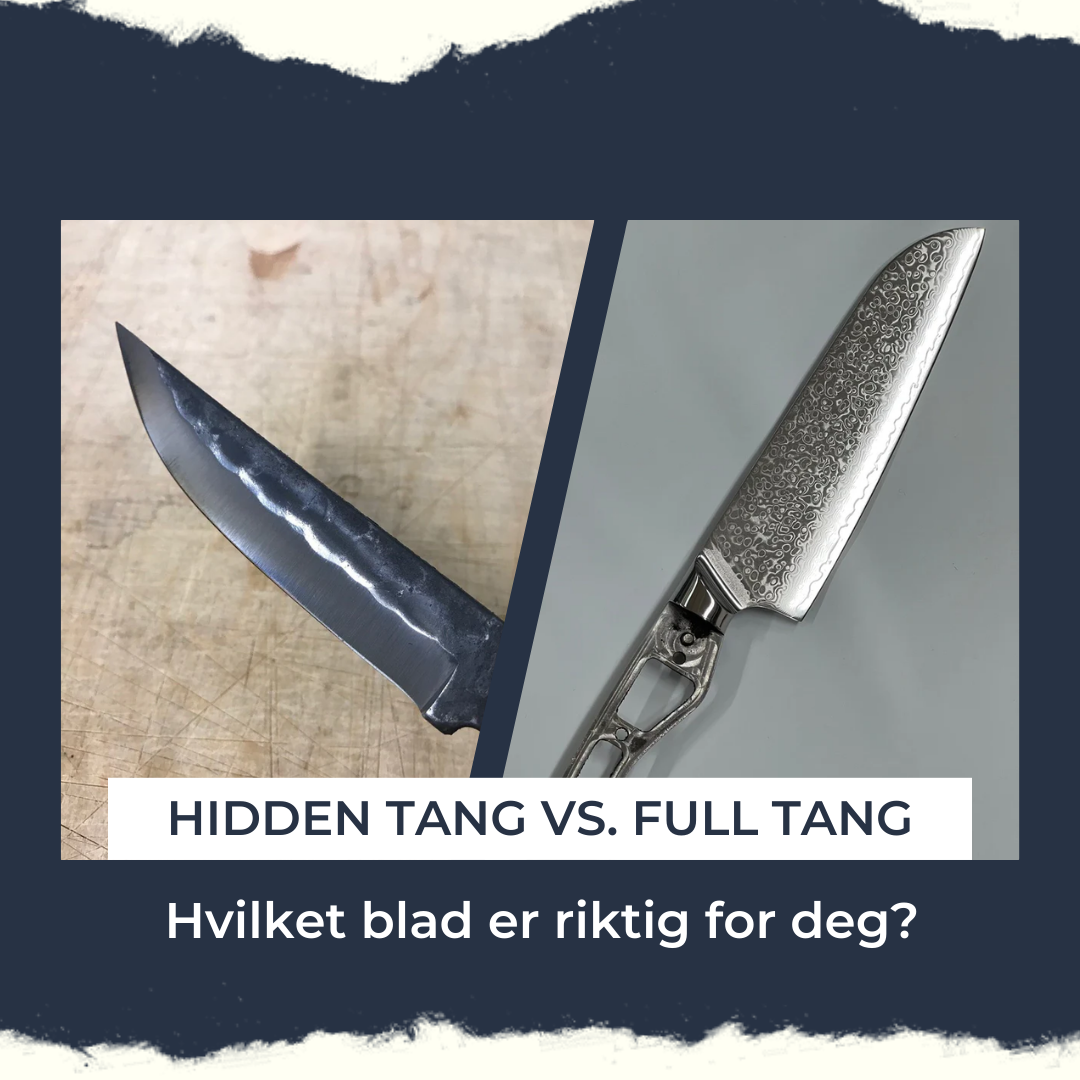Hello there, dear aspiring knifemakers! When it comes to making a knife, the blade you choose shapes more than just the edge – it defines the entire design and feel of the knife in use. But how do you decide between Hidden Tang and Full Tang?
What is a tang on a knife?
Contrary to what one might associate with plumber's pliers and the like, the tang on a knife is something completely different. It is the part of the knife blade that goes into the handle . See the thin protruding part of this popular 210mm Sami knife blade that I am holding in my hand in the picture below, that is the tang on the blade:
That's the tang. But it doesn't have to look exactly like that! That's why you're now going to learn the difference between the two main types we often talk about in knifemaking circles. Hidden tang and Full tang.
What is hidden tang?
Hidden tang is when the back end of the blade goes into the shaft and is hidden. It is usually characterized by the knife shaft part of the blade being just a pin or not having a shaft shape. These are usually inserted into a hole in a shaft material in the form of a block, instead of mounting plates on the side. The Sami knife blade above is a classic example of hidden tang, where the tang is inserted into a corresponding hole in a shaft block. See our full range of hidden tang blades . Below you can see one of our popular 75mm Hammerfinish knife blades !
What is full tang?
Full tang is when the handle shape is part of the blade and the tang extends all the way around the handle, and the handle shape is largely determined by the knife blade designer. Handle material in the form of plates is mounted on the side, and secured with rivets and epoxy. See an example of our best-selling full tang blade Helle Utvær here:
Please take a look at our full-tang knife blades !
What are the advantages of full tang and hidden tang?
Hidden Tongue: Elegant and Versatile
Hidden Tang blades are perfect if you want to make a knife with:
- Elegant, seamless handles – no visible steel for a polished look.
- Creative freedom – ideal for artistic designs with complete freedom to shape the shaft to your liking.
- Light balance – because the shaft end is naturally lighter than with a full tang
Pro Tip: Use strong, durable handle materials like wood or composites to ensure strength, or reinforce the material with metal pins on the inside to ensure extra strength.
Full Tange: Solid and Reliable
Full Tang blades shine when you need:
- Maximum durability – the steel runs through and out the entire handle for extra strength.
- A symmetrical style – the steel provides strength and a nice central line
- Easy assembly – flat tang makes it easier to attach the handle neatly
- More materials – The strength of the pliers makes it easier to use materials that would otherwise be too weak or brittle
Pro Tip: Add contrasting pins or screws to enhance the visual appeal of your knife.
Which one suits your next project?
If you value aesthetic freedom and a refined finish, concealed tang is the right choice. If strength and functionality are most important, full tang is hard to beat.
Are you still unsure?
See our complete selection of both concealed and hidden tang knife blades on the category page knife blades for knifemaking . Here you will find, among other things, utility knives, woodcarving knives, forestry knives, hunting knives, gouging irons, kitchen knives and more. Find the perfect match for your next project! Contact us if you have any questions!






Leave a comment
All comments are moderated before being published.
This site is protected by hCaptcha and the hCaptcha Privacy Policy and Terms of Service apply.